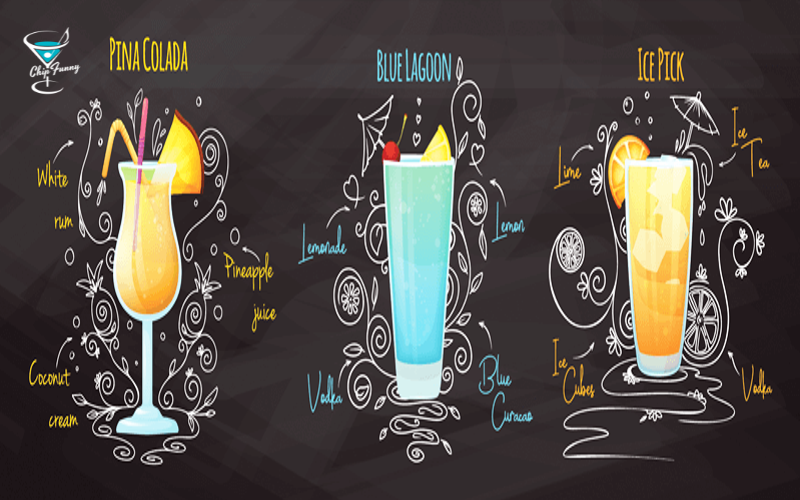Mixology Made Easy: Top Cocktail Garnishes for Home Bartenders
Welcome to the world of mixology, where the art of crafting exceptional cocktails comes alive! Whether you’re a novice or a seasoned home bartending enthusiast, mastering mixology techniques can elevate your drink-making skills to new heights. In this guide, we’ll explore an array of cocktail recipes that cater to every palate, from refreshing classics to innovative creations. You’ll also discover the importance of spirits and liqueurs, as well as tips for selecting the perfect cocktail garnishes to enhance presentation and flavor. Join us on this delicious journey to create perfect cocktails right from the comfort of your home! Introduction to Mixology and Its Importance Mixology is not just about mixing drinks; it’s the art and science of crafting cocktails that delight the senses. In an age where craft cocktails are gaining immense popularity, understanding the fundamentals of mixology has become essential for both aspiring bartenders and home enthusiasts. This guide aims to delve deep into the world of mixology, exploring its definition, history, essential tools, techniques, and popular cocktail recipes. Definition of Mixology Definition of Mixology Mixology refers to the skillful art of creating cocktails by combining various spirits, liqueurs, and mixers into well-balanced and visually appealing beverages. Unlike traditional bartending, which focuses primarily on serving drinks, mixology emphasizes creativity, flavor balance, and presentation. A skilled mixologist not only understands the technical aspects of drink preparation but also possesses a keen sense of taste and an appreciation for the aesthetics of cocktail presentation. History of Mixology The history of mixology traces back centuries, with roots that can be found in ancient civilizations. Here’s a brief overview of its evolution: Ancient Times: The earliest records of mixed drinks date back to ancient China and Egypt, where fermented beverages were combined with herbs for medicinal purposes. 18th Century: The cocktail, as we know it today, began to emerge in the 1700s. The first known definition appeared in 1806 in a New York newspaper, describing it as a mixture of spirits, sugar, water, and bitters. Prohibition Era: The 1920s saw a rise in creative cocktail-making as bartenders sought to mask the taste of poorly made, bootlegged spirits. This period gave birth to many classic cocktails that endure today. Modern Mixology: The late 20th and early 21st centuries have seen a resurgence in cocktail culture, with a focus on quality ingredients, artisanal spirits, and innovative techniques. The Role of Mixologists in the Beverage Industry Mixologists play a pivotal role in the beverage industry, serving as the bridge between spirits and consumers. Their responsibilities include: Creating Signature Cocktails: Designing unique drinks that reflect the establishment’s theme or the season. Educating Consumers: Providing insights into the ingredients, flavors, and techniques used in the cocktails. Maintaining Quality Standards: Ensuring that each cocktail is crafted to perfection by adhering to recipes and techniques. Sourcing Ingredients: Collaborating with suppliers to procure high-quality spirits, liqueurs, and fresh ingredients. Essential Tools and Equipment for Mixology Essential Tools and Equipment for Mixology To embark on your mixology journey, you’ll need a selection of essential tools and equipment. Here’s a breakdown of what you need to get started. Must-Have Bar Tools for Beginners Having the right tools is crucial for any aspiring mixologist. Here’s a list of must-have bar tools: Shaker: Used for shaking cocktails to combine ingredients and chill them. Strainer: Used to separate the liquid from the ice and other solid ingredients. Jigger: A measuring tool to ensure precise quantities of spirits and mixers. Muddler: A tool to crush herbs and fruits, releasing their flavors. Bar Spoon: A long spoon used for stirring and layering drinks. Glassware Types Used in Mixology The type of glassware you use can significantly impact the presentation and experience of a cocktail. Here are some common glass types: Highball Glass: Ideal for tall cocktails like mojitos and gin and tonics. Rocks Glass: Perfect for cocktails served on the rocks, such as an Old Fashioned. Martini Glass: A classic choice for martinis and other stirred cocktails. Coupe Glass: Often used for vintage cocktails and champagne-based drinks. Importance of Quality Ingredients in Mixology The quality of your ingredients can elevate your cocktails from ordinary to extraordinary. Here’s why selecting the right spirits and mixers matters: Flavor Profile: High-quality spirits and fresh mixers contribute to a well-balanced flavor profile, enhancing the overall taste of the cocktail. Fresh Ingredients: Utilizing fresh herbs, fruits, and spices adds depth and complexity to cocktails. Studies show that 70% of consumers prefer cocktails made with fresh ingredients. Craft Spirits: Artisanal and craft spirits often offer unique flavors and characteristics that can set your cocktails apart. Mixology Techniques Every Bartender Should Master Mixology Techniques Every Bartender Should Master Mastering the techniques of mixology is essential for creating exceptional cocktails. Here are some fundamental techniques every mixologist should know. Shaking vs. Stirring: When to Use Each Shaking: Ideal for cocktails containing juices, creams, or other ingredients that need to be thoroughly mixed. Shaking introduces air, creating a frothy texture. Stirring: Best for spirit-forward cocktails like martinis, where the goal is to chill and dilute without excessive aeration. Layering and Presentation Techniques Creating visually stunning cocktails can impress your guests and elevate the drinking experience. Here are some techniques to consider: Layering: Pouring ingredients slowly over the back of a spoon can create beautiful layers in cocktails. Garnishing: Enhancing the visual appeal with fresh herbs, fruit slices, or edible flowers. Garnishing: Enhancing Cocktails with Visual Appeal Garnishes not only add visual appeal but can also complement the flavors of the cocktail. Here are some popular garnish options: Citrus Zest: Adds a burst of aroma and flavor. Herbs: Fresh mint or basil can enhance the complexity of a drink. Fruit: Slices of citrus, berries, or even cherries can add color and flavor. Popular Mixology Recipes and Their Variations Popular Mixology Recipes and Their Variations Now that you’re equipped with the knowledge of tools and techniques, let’s explore some popular cocktail recipes and their variations. Classic Cocktails Every Mixologist Should Know Here are a few classic cocktails that





